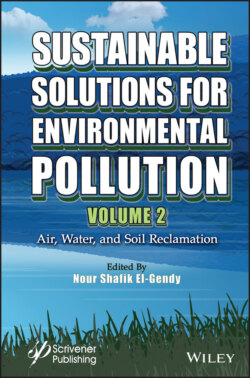Читать книгу Sustainable Solutions for Environmental Pollution, Volume 2 - Группа авторов - Страница 69
1.16.1 Three Nested Logics for Innovative NBS Implementation
ОглавлениеIn order to optimize currently implemented NBSs and to design new ones, it is necessary to acquire a better knowledge of the functioning of water bodies and to organize them. To do this, it is necessary to theorize the knowledge of eco-hydrological functioning, develop a conceptual model and design new NBSs. Because of the functional coherence inherent to any ecosystem, the functional variations of a water body can be considered as the responses of the structured system to changes according three nested logics: Form-Fluxes-Process logics (see the upper cycle in the Figure 1.13). This functioning model regulates the relationships between the essential disciplines to our integrated approach of ecological functioning in rivers, as for example the self-purification function, by associating geomorphology (form), hydrology (water flow), physical-chemistry (nutrient and pollutant fluxes), and biology (metabolic activities, assimilation, and biodegradation).
Figure 1.13 Logical nesting between levers (actions on forms, fluxes, and biocenosis) for managing NBSs in an anthroposystem governed by laws in force and societal demands.
The different functions identified in Table 1.2 allow us to design the type of installation according to the types of pollution to be treated and their extent. This conceptual model is our framework for integrating knowledge and designing strategies and equipment to mitigate anthropogenic pressure on the resource and preserve ecosystems in highly modified environments.
The model provides a framework for the integration of knowledge and the design of strategies and equipment conceived to mitigate anthropogenic pressure on the water resource and preserve ecosystems in highly modified environments.
It has been integrated in the framework of eco-hydrology to give an operational model allowing action (identification of societal levers of action on the ecosystem). Figure 1.13 also illustrates the double regulation of the ecological state of a hydrosystem, linking our three structuring logics to the two modes of action of society: 1) regulation and measures; and 2) management and actions on the ecosystem, via technologies or methodologies acting on morphology, flows, and/or biocoenosis. The interaction of these three logics leads to the formation of hot spots and hot moments, which need to be located and quantified.
Table 1.2 Interactions between the three nested logics of the aquatic biotope and the different filtering processes (filter effects).
| Filter effects | Three action levels | ||
| Forms | Fluxes | Processes | |
| Mechanical | Screening due to pore size | Feed in particulate matter | Immobilization of particulate micro-pollutants |
| Physical | Surface area to adsorb dissolved compounds | Supply in dissolved compounds (pollutants and nutrients) | Adsorption of dissolved pollutants |
| Physical-Chemical | Chemical reactivity of geological background | Supply in TEA, pH buffering and reactive chemical elements | Precipitation and physical-chemical redox processes |
| Biological | Physical support for microbiocenosis | Supply in living microorganisms | Biodegradation, assimilation and self-purification |
